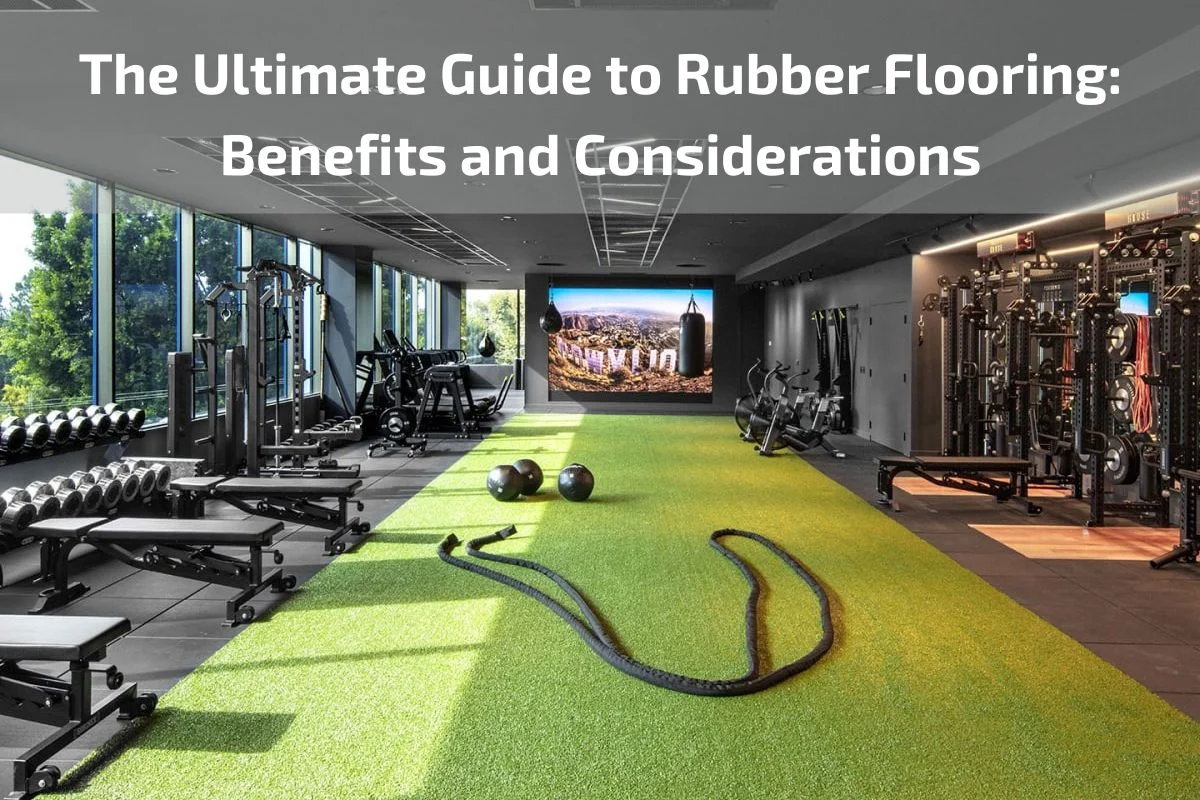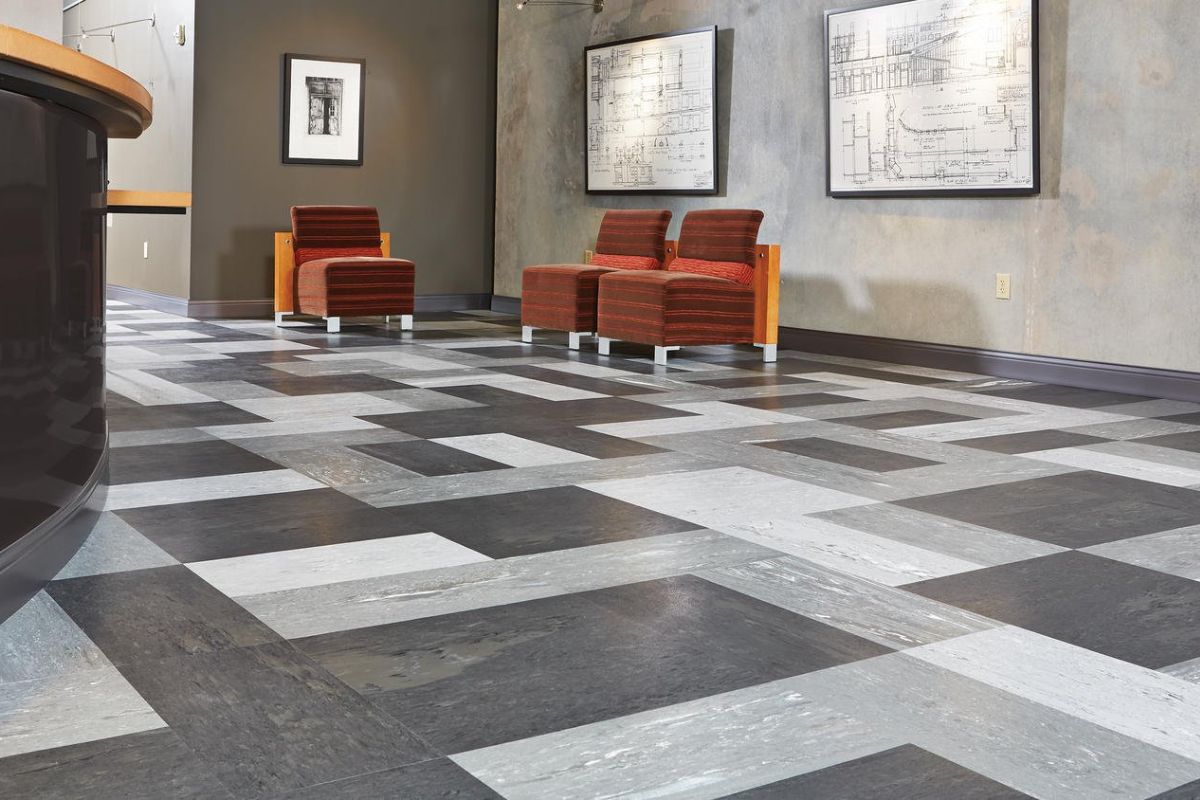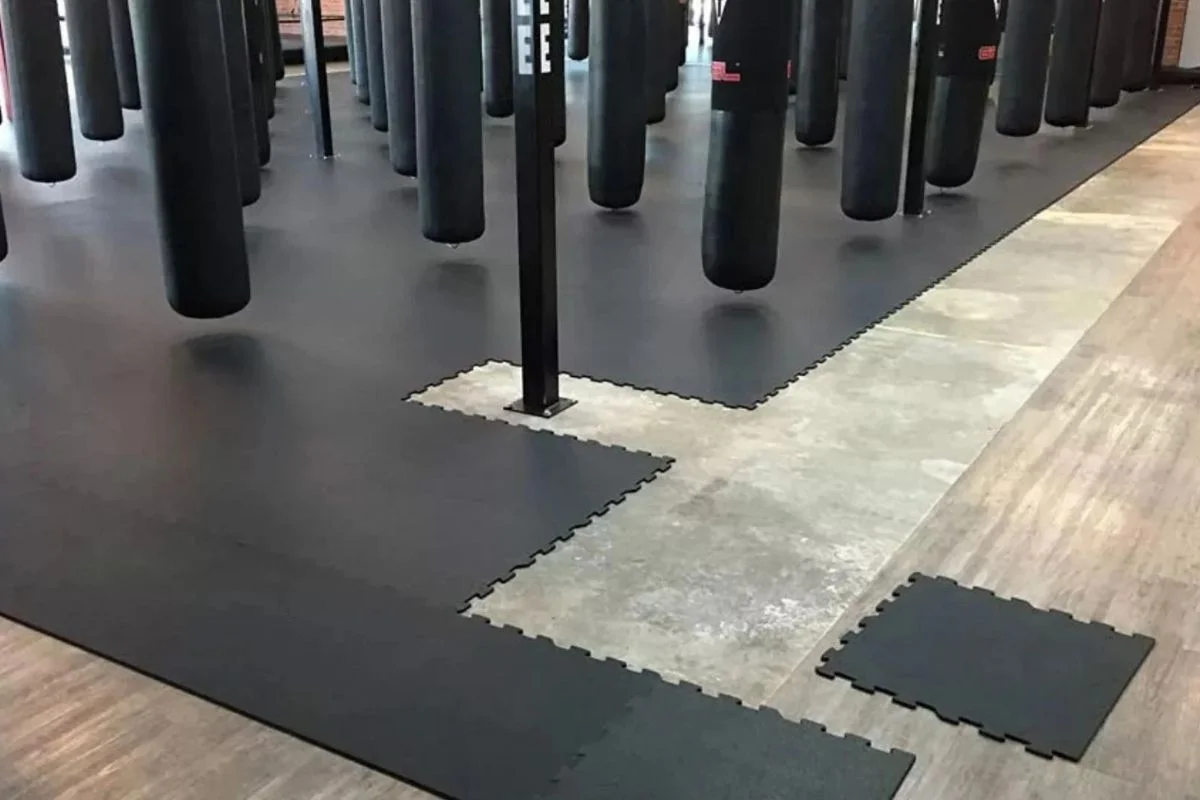The Ultimate Guide to Rubber Flooring: Benefits and Considerations
Rubber flooring has emerged as a versatile and durable option for both residential and commercial spaces, offering a wide array of benefits and considerations for discerning homeowners and businesses alike. Whether you’re renovating your home, designing a gym, or outfitting a commercial space, understanding the advantages and potential drawbacks of rubber flooring is essential to making informed decisions.
In this comprehensive guide, we will delve into the world of rubber flooring, exploring its numerous benefits and key considerations. From its remarkable durability to its diverse design options, rubber flooring has become a popular choice for a variety of applications. Join us as we uncover the advantages and considerations of rubber flooring and learn how it can enhance the functionality and aesthetic appeal of any space.
Importance of Rubber Flooring in Interior Design
Rubber flooring plays a pivotal role in modern interior design, offering a plethora of benefits that contribute to the functionality, aesthetics, and overall ambiance of a space. Here’s why rubber flooring holds significant importance in interior design:
- Versatility: Rubber flooring comes in various colors, patterns, and textures, providing designers with endless possibilities to create unique and visually appealing interiors. Whether you’re aiming for a sleek, contemporary look or a more traditional aesthetic, rubber flooring can be tailored to match the design scheme of any space.
- Durability: One of the primary advantages of rubber flooring is its exceptional durability. It can withstand heavy foot traffic, making it an ideal choice for high-traffic areas such as commercial spaces, hallways, and entryways. Its resilience ensures that it maintains its integrity even in the face of constant use, making it a long-lasting flooring option.
- Comfort: Rubber flooring offers superior comfort underfoot, thanks to its cushioning properties. It provides a soft and supportive surface, making it comfortable to walk or stand on for extended periods. This makes it particularly suitable for spaces where people spend a significant amount of time, such as kitchens, playrooms, and fitness centers.
- Safety: Safety is a paramount consideration in interior design, especially in spaces frequented by children, seniors, or individuals with mobility challenges. Rubber flooring offers excellent slip resistance, reducing the risk of slips and falls, even in wet or slippery conditions. Its traction properties provide stability and peace of mind, making it a safe flooring option for all environments.
- Sound Absorption: Rubber flooring has excellent sound absorption qualities, helping to reduce noise levels within a space. This is particularly beneficial in busy environments such as offices, schools, and healthcare facilities, where noise control is essential for productivity, concentration, and patient comfort.
- Easy Maintenance: Rubber flooring is incredibly low-maintenance, requiring minimal upkeep to keep it looking fresh and new. Its smooth surface makes it easy to clean, with regular sweeping and occasional mopping usually sufficient to remove dirt and debris. This simplicity in maintenance saves both time and resources, making rubber flooring a practical choice for busy environments.
- Sustainability: Many rubber flooring options are made from recycled materials, making them an environmentally friendly choice for eco-conscious designers and homeowners. Additionally, rubber flooring is often recyclable at the end of its lifespan, further reducing its environmental impact and contributing to sustainable design practices.
Advantages and Disadvantage of Rubber Flooring
Rubber flooring presents a variety of advantages and disadvantages that should be considered when selecting flooring options for interior spaces. Understanding these factors can help individuals make informed decisions based on their specific needs and preferences.
Advantages:
- Durability: Rubber flooring is renowned for its exceptional durability, making it suitable for high-traffic areas such as commercial spaces, gyms, and schools. It can withstand heavy foot traffic, abrasion, and impact, maintaining its integrity even in challenging environments.
- Comfort: Rubber flooring offers excellent underfoot comfort due to its cushioning properties. It provides a soft and resilient surface that absorbs impact and reduces fatigue, making it comfortable to stand or walk on for extended periods.
- Safety: Safety is a significant advantage of rubber flooring, as it offers excellent slip resistance even when wet. Its textured surface provides traction and stability, reducing the risk of slips and falls, especially in areas prone to moisture or spills.
- Sound Absorption: Rubber flooring has excellent sound absorption qualities, helping to reduce noise levels within a space. This makes it ideal for environments where noise control is essential, such as offices, schools, and healthcare facilities.
- Easy Maintenance: Rubber flooring is relatively easy to maintain, requiring minimal upkeep to keep it clean and in good condition. Regular sweeping and occasional mopping with a mild detergent are typically sufficient to remove dirt and debris.
- Versatility: Rubber flooring comes in a wide range of colors, patterns, and textures, offering endless design possibilities. It can be customized to complement any interior aesthetic, from modern and sleek to traditional and rustic.
Disadvantages:
- Cost: While durable and long-lasting, rubber flooring can be more expensive upfront compared to some other flooring options such as vinyl or laminate. However, its longevity and low maintenance costs often justify the initial investment in the long run.
- Limited Design Options: Despite its versatility, rubber flooring may have fewer design options compared to materials like ceramic tile or hardwood flooring. Some individuals may find the design choices limited, especially if they are seeking specific patterns or textures.
- Potential for Discoloration: Rubber flooring may discolor over time, particularly when exposed to direct sunlight or certain cleaning chemicals. While proper maintenance can help mitigate discoloration, it’s essential to be mindful of factors that may affect the appearance of the flooring.
- Susceptibility to Scratches and Dents: While durable, rubber flooring may still be susceptible to scratches and dents from heavy furniture or sharp objects. Using furniture pads or coasters can help prevent damage to the flooring surface.
Types of Rubber Flooring
Rubber flooring comes in various types, each offering unique characteristics and benefits suited for different applications and environments. Here are some common types of rubber flooring:
- Rubber Tiles: Rubber tiles are individual square or rectangular pieces of rubber that can be easily installed using adhesive or interlocking mechanisms. They come in various thicknesses, colors, and patterns, offering versatility in design and customization. Rubber tiles are popular for both residential and commercial spaces due to their durability and ease of installation.
- Rubber Rolls: Rubber rolls consist of continuous sheets of rubber that can be rolled out and installed over large areas. They are available in different thicknesses and widths, making them suitable for covering expansive spaces with minimal seams. Rubber rolls provide a seamless flooring solution ideal for gyms, fitness centers, and industrial facilities.
- Interlocking Rubber Flooring: Interlocking rubber flooring features tiles or mats with interlocking edges that fit together like puzzle pieces. This installation method eliminates the need for adhesive and allows for quick and easy installation. Interlocking rubber flooring is commonly used in temporary or DIY applications where flexibility and convenience are essential.
- Poured-in-Place Rubber Flooring: Poured-in-place rubber flooring is a seamless rubber surface that is poured directly onto the subfloor and then leveled and cured to create a smooth and durable finish. It offers excellent impact absorption and slip resistance, making it ideal for playgrounds, recreational areas, and outdoor spaces.
- Rubber Mats and Sheets: Rubber mats and sheets are pre-cut or custom-sized pieces of rubber that can be used to cover specific areas or create pathways within a space. They are often used in industrial settings, workshops, and commercial kitchens where slip resistance and ergonomic comfort are paramount.
Design Trends and Ideas for Rubber Flooring
Rubber flooring offers a wide range of design possibilities, making it a versatile choice for various interior spaces. Here are some design trends and ideas for incorporating rubber flooring into your design scheme:
- Bold Colors: Embrace bold and vibrant colors to make a statement with rubber flooring. Opt for shades like deep blues, rich greens, or fiery reds to add personality and energy to the space. Bold colors are perfect for children’s playrooms, fitness centers, or creative workspaces.
- Geometric Patterns: Create visual interest with geometric patterns and shapes using rubber flooring tiles. Experiment with patterns like chevron, herringbone, or hexagon to add a modern and dynamic touch to the floor. Geometric patterns work well in contemporary interiors and commercial settings.
- Wood and Stone Emulation: Achieve the look of natural materials like wood or stone with rubber flooring. Choose rubber tiles or rolls with realistic wood grain or stone textures to create the warmth and elegance of hardwood or natural stone flooring. Wood and stone emulation is perfect for adding a touch of nature to interior spaces without the maintenance requirements of natural materials.
- Mix and Match: Combine different colors or patterns of rubber flooring tiles to create custom designs and layouts. Mix and match tiles to form unique patterns, borders, or accents that reflect your personal style and design preferences. Mixing and matching allow for endless design possibilities and customization options.
- Graphic Designs: Explore graphic designs and motifs to add visual interest and personality to rubber flooring. Incorporate bold graphics, typography, or illustrations to create focal points or tell a story within the space. Graphic designs are ideal for commercial spaces, retail environments, or themed rooms.
- Texture and Dimension: Choose rubber flooring with textured surfaces to add depth and dimension to the floor. Textured rubber flooring provides tactile interest and enhances slip resistance, making it suitable for areas requiring extra traction, such as entryways or wet zones. Consider raised patterns, embossed textures, or stippled finishes for added visual appeal.
- Custom Logos and Branding: Personalize rubber flooring with custom logos, branding elements, or artwork to reinforce brand identity and create a memorable impression. Customized rubber flooring is perfect for corporate offices, retail spaces, or hospitality venues looking to showcase their brand personality and values.
- Sustainable Designs: Embrace sustainable design principles by choosing eco-friendly rubber flooring made from recycled materials. Opt for products with low VOC emissions and environmentally responsible manufacturing practices. Sustainable designs align with green building initiatives and contribute to healthier indoor environments.
Maintenance and Care Guidelines Rubber Flooring
Maintaining and caring for rubber flooring is essential to preserve its appearance, performance, and longevity. Here are some maintenance and care guidelines to keep your rubber flooring looking its best:
- Regular Cleaning: Establish a routine cleaning schedule to remove dirt, dust, and debris from the surface of the rubber flooring. Use a soft-bristled broom, vacuum cleaner with a brush attachment, or dry mop to sweep or vacuum the floor regularly.
- Mild Cleaning Solutions: Use a mild detergent or soap solution diluted in water for routine cleaning of rubber flooring. Avoid harsh chemicals, abrasive cleaners, or solvents, as they can damage the surface of the flooring and diminish its appearance over time.
- Spot Cleaning: Promptly clean up spills and stains using a damp cloth or sponge and mild detergent. Avoid allowing spills to sit on the surface for an extended period, as they can penetrate the rubber and become more challenging to remove.
- Avoid Standing Water: Rubber flooring is water-resistant but can still be damaged by prolonged exposure to standing water. Wipe up spills and moisture immediately using a clean, dry cloth or mop to prevent water from seeping into the seams and causing damage.
- Avoid Abrasive Tools: Refrain from using abrasive scrubbing pads, brushes, or abrasive cleaners on rubber flooring, as they can scratch or damage the surface. Opt for soft cleaning tools and gentle cleaning solutions to preserve the integrity of the flooring.
- Avoid Heavy Furniture Dragging: Take precautions to prevent dragging heavy furniture or sharp objects across the surface of the rubber flooring, as they can cause scratches, scuff marks, or indentations. Use furniture pads or coasters under heavy furniture legs to distribute weight and prevent damage.
- Protective Mats and Rugs: Place mats or rugs at entryways and high-traffic areas to capture dirt, debris, and moisture before they reach the rubber flooring. Regularly clean and replace mats to prevent the buildup of dirt and contaminants on the flooring surface.
- Periodic Deep Cleaning: Consider periodic deep cleaning of rubber flooring using a specialized rubber floor cleaner or neutral pH cleaner recommended by the manufacturer. Follow the instructions carefully and rinse the floor thoroughly to remove any residue.
- Inspect for Damage: Regularly inspect the rubber flooring for signs of wear, damage, or deterioration. Look for cracks, tears, or areas of uneven wear that may indicate the need for repair or replacement. Address any issues promptly to prevent further damage and ensure safety.
Conclusion
In conclusion, rubber flooring emerges as a versatile and practical choice for a wide range of interior spaces, offering numerous benefits and design possibilities. With its durability, comfort, safety features, and low-maintenance requirements, rubber flooring proves to be a reliable solution for residential, commercial, and institutional environments.





0 comments